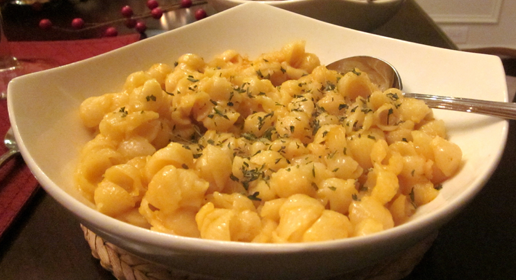MACARONI AND CHEESE: THE ORIGIN STORY

AXIOMS #10: MACARONI & CHEESE: THE ORIGIN STORY
We at Axioms are discouraged from having opinions of our own, and we usually follow that rule to a T, with a few minor exceptions. For example, writing that we don’t like Dr Pepper, or we prefer Pepsi over Coke, or we think Coke is a good company because they stopped using cocaine in their soda before it became illegal, or only mentioning our favorite names for groups of animals, or saying what we find interesting, or how much we wish words would follow thrice, or that Lionel Richie should change his song, or…

As you can see, we rarely break the rules regarding objectivity. We believe we do a fantastic job.
Disclosure: Axioms has also asked Barry to cease writing about himself in the plural, but he clearly hasn’t stopped doing that either.
Despite my attempts at neutrality, I must impart my opinion here. Are you happy now, Axioms people????
Axioms: Better, but you could cut back on the snarky attitude.
As you may have deduced from the title of today’s Axioms, I’m of course referring to macaroni and cheese. Yum!! I love mac & cheese. It’s one of those guilty pleasures. I have to preface this by stating it has to be the correct kind of mac & cheese. I don’t like the one with the powdered cheese that you have to add milk and butter to. Or the microwaveable ones. Those I am not a fan of. It has to have the deluxe cheese packet inside that you squeeze out. Or…it can be fresh made with real cheese. I won’t say no to either of those. *GASP* I know, I know. Yes, I like boxed macaroni and cheese with the artificial cheese sauce. It's just one of those things.
That leads us to an interesting question, and the topic of today’s Axioms. What are the origins of this delicious meal and side dish?
The oldest recorded recipe for macaroni and cheese is found in 14th century England in two medieval cookbooks. It is unknown if the dish originated in England, or if it was imported from another location. There are records of macaroni and cheese later on in Naples (the city of scholars) and other parts of Italy, but we are unable to ascertain whether the recipes were created independently or if one is derived from the other. Currently, the commonly held belief is that it was created in Northern Europe.
Although it has been around for at least seven hundred years, the recipe eaten by people in the days of old was much different from the mac & cheese we know and love today. We’re going to fast forward now. Allow me to take you on a trip through time. We’ll leave the 1300s and move forward to 1769. Not much happens in those 400 years, anyhow. I think someone builds a castle and other people fight about it or something. The important thing is modern macaroni and cheese takes shape in the form of a recipe in 1769.
That was the year that Elizabeth Raffald released her cookbook, “The Experienced English Housekeeper.” It was an instant bestseller at Barnes & Noble and Amazon.com, or at least the ancient equivalent. Her instructions were as follows: béchamel sauce with cheddar cheese, mixed with macaroni, sprinkled parmesan on top, and baked until bubbly and golden. I think Lizzie was onto something there, because that sounds amazing!
But how did it arrive in the United States? Thomas Jefferson is credited with introducing macaroni and cheese to the U.S., but it was most likely brought here before him. However, he is the reason why it became so popular. Jefferson loved all of the pasta dishes he encountered in Paris. He made detailed notes and recipes about how to make macaroni and asked his ambassador in Naples (the city of intellectuals) to send him a pasta machine so he could make it himself.

Jefferson’s daughter used to throw macaroni and cheese parties at their home (throw seems like a poor choice in words, as it sounds like she was literally throwing mac & cheese, which she may have, but not to my knowledge). In 1802, Jefferson served a macaroni and cheese pie at a state dinner. It wasn’t a hit among all of the attendees, but word spread quickly throughout the states. Early on, macaroni and cheese was only served in the finest dining establishments and enjoyed by the upper class. After factories began producing the ingredients for the masses, it lost its appeal among the wealthy. Recently, fine dining establishments have reintroduced macaroni and cheese with their own twists.
So, that is the fascinating history of macaroni and cheese! This ended up being a somewhat long history lesson, but who is to say useless trivia isn’t synonymous with history? Don’t answer that. I have been interested in writing about this topic for a long while and I hope you found it enjoyable.
Stay tuned to Axioms with Barry for future installments, where we will cover a wide array of intriguing topics. Until next time, stay knowledgeable!
Question: Do you prefer this style, where we cover one topic in great detail, or would you rather see more posts resembling our earlier Axioms, with multiple topics in one?




Author and hobby digital artist. Barry loves useless trivia and learning new, interesting facts.